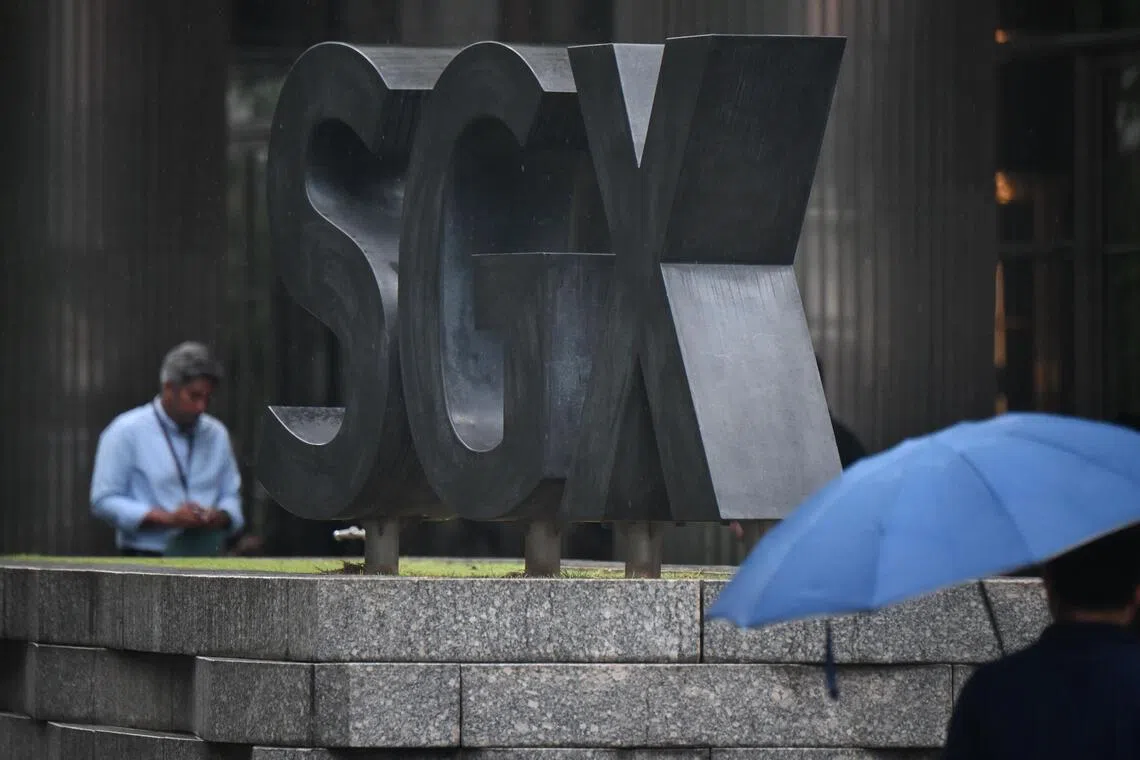Singapore shares hit new high; STI up 1.5%
Sign up now: Get ST's newsletters delivered to your inbox

The benchmark Straits Times Index rose 1.5 per cent or 67.87 points to close at an all-time high of 4,484.99.
PHOTO: ST FILE
Navene Elangovan
Follow topic:
SINGAPORE – Local shares ended higher on Nov 6, lifted by record gains in DBS and Singtel.
The benchmark Straits Times Index (STI) rose 1.5 per cent or 67.87 points to close at an all-time high of 4,484.99. The iEdge Singapore Next 50 Index gained 0.04 per cent or 0.6 points to 1,443.88.
Singtel was the day’s top blue-chip gainer, rising 5.4 per cent or 23 cents to close at a record $4.50. This followed media reports that the local telco and global investment firm KKR & Co are in talks to buy more than 80 per cent of ST Telemedia Global Data Centre. The $5 billion deal will give Singtel and KKR full ownership of the Singapore data centre.
DBS also hit a record high on Nov 6, gaining 3.8 per cent or $2.04 to end at $55.54 after its third-quarter earnings beat analysts’ forecasts. The counter’s net profit for the third quarter ended Sept 30 fell 2 per cent to $2.95 billion, compared with $3.03 billion for the year-ago period.
The biggest decliner on the STI was UOB, which also reported its third-quarter earnings on Nov 6. The counter fell 2.8 per cent or 97 cents to $33.90 after it reported a 72 per cent year-on-year decline in net profit.
OCBC, which will report its earnings on Nov 7, ended 0.8 per cent or 13 cents higher at $17.19.
Genting Singapore was the most actively traded counter on the STI by volume, with 77.6 million units worth $56.8 million traded. The counter ended flat at 73 cents.
Across the broader market, advancers outnumbered decliners 376 to 190 after 1.5 billion securities worth $2.9 billion changed hands.
Key regional indexes mostly ended in positive territory. South Korea’s Kospi rose 0.6 per cent; Japan’s Nikkei 225 gained 1.3 per cent; Australia’s ASX 200 grew 0.3 per cent; and Hong Kong’s Hang Seng Index was up 2.1 per cent. THE BUSINESS TIMES

